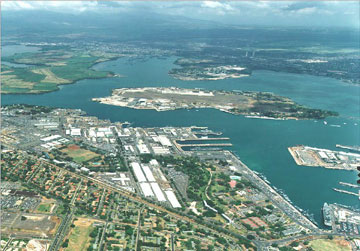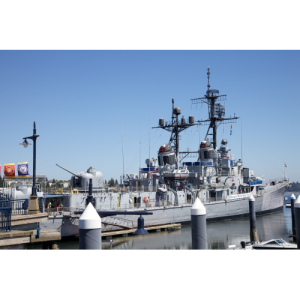 Hawai‘i workers at Pearl Harbor Naval Shipyard were exposed to significant amounts of asbestos insulation as they repaired and overhauled battleships, destroyers, cruisers, aircraft carriers, submarines, auxiliary crafts, and many other types of vessels. Both aboard ships and in the shops, shipyard workers worked in very confined spaces where all the trades worked side by side. As a result, all of the workers at Pearl Harbor were heavily exposed to asbestos dust as they carried out their work.
Hawai‘i workers at Pearl Harbor Naval Shipyard were exposed to significant amounts of asbestos insulation as they repaired and overhauled battleships, destroyers, cruisers, aircraft carriers, submarines, auxiliary crafts, and many other types of vessels. Both aboard ships and in the shops, shipyard workers worked in very confined spaces where all the trades worked side by side. As a result, all of the workers at Pearl Harbor were heavily exposed to asbestos dust as they carried out their work.
During ship construction, the shipyard workers cut, shaped, mixed, and sawed asbestos insulation products. Pads, felt, cloth, block, pipe covering, tape, thread, cement, gaskets, and packing–all of which contained asbestos–were used to insulate the piping and machinery in the machinery spaces and throughout the rest of the ship. Clearly, ship construction generated massive amounts of asbestos dust, which all of these workers breathed in confined spaces on a daily basis.
The ships’ repair and maintenance schedule also generated tremendous amounts of asbestos dust. To accomplish ship repairs, the shipyard workers had to routinely disturb and remove the extensive asbestos insulation that covered the piping, valves, and machinery. To repair and overhaul the propulsion equipment, workers would either have to disassemble it in place or transport it to and from the various shipyard shops for in-shop repair or overhaul.
 Some shipyard workers were assigned to shops and others worked daily on board ships that were tied to the piers or in dry dock. Within the shops, a crew of four to six workers was typically assigned to support a ship overhaul or project on the waterfront. These crews worked closely with the other shipyard industrial trades to remove the various pieces of equipment to the shipyard shops for repair or overhaul as required, and to return these same pieces of equipment to the ship when such repairs or overhauls were completed.
Some shipyard workers were assigned to shops and others worked daily on board ships that were tied to the piers or in dry dock. Within the shops, a crew of four to six workers was typically assigned to support a ship overhaul or project on the waterfront. These crews worked closely with the other shipyard industrial trades to remove the various pieces of equipment to the shipyard shops for repair or overhaul as required, and to return these same pieces of equipment to the ship when such repairs or overhauls were completed.
As the old and damaged asbestos insulation, gaskets, and packing were removed from the machinery, asbestos dust was released. Likewise, asbestos dust was created when asbestos insulation, gaskets, and packing were reinstalled. The shipyard workers who were on board the ship during repairs worked side by side in close proximity to each other, as did the workers in the various shops. All of these workers regularly breathed the asbestos dust generated by the repair and maintenance of the ship’s equipment.
For more than 35 years, the Galiher firm has represented Pearl Harbor with mesothelioma and other asbestos diseases. Our clients were unaware of the hazards of breathing asbestos. Nevertheless, they were exposed on a daily basis to asbestos dust that was created as ships were constructed or repaired. Their hard work on Navy vessels put these Hawai‘i workers them at risk of contracting mesothelioma or other asbestos diseases.
